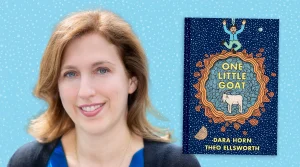Incidents of hate-motivated crimes in Toronto increased by eight per cent in 2016 over the previous year, with Jews earning the dubious distinction of being the single-most targeted group for the 12th year in a row.
Of 145 total incidents reported to police, Jews were victimized 43 times, according to the Toronto Police Service 2016 Annual Hate/Bias Crime Statistical Report.
The number rises to 51 when “multi-bias occurrences,” which take into account more than one identifiable group, are included. Black/Jewish, with three reported incidents, and black/Jewish/LGBTQ, with two, boost the numbers, while single occurrences were recorded by Hindu/Jewish, Indian/Jewish and Japanese/Jewish victims.
While Jews were the single most victimized group overall as well as the single most victimized religious group, the numbers can be considered out of proportion to the number of Jews living in Toronto. Citing the 2011 census published by Statistics Canada, the report notes that Jews make up only 3.8 per cent of Toronto’s population of 2.8 million, yet were “victimized in approximately 30 per cent of the total hate/bias crimes in 2016.”
READ: POLICE INVESTIGATE ANTI-SEMITIC INCIDENTS AT TORONTO CONDO
The report, prepared by Toronto Police Services’ Intelligence Services, Hate Crimes Unit, notes that after Jews, “the lesbian, gay, bisexual, transgender and queer (LGBTQ) community was the next most targeted victim group, reporting 24 occurrences, followed by the black and the Muslim communities, reporting 22 occurrences each.”
The findings suggest the 2016 numbers fell within a 10-year range. Since 2007, the number of incidents reached as high as 174 in 2009 and fell as low as 123 in 2011. The average number of occurrences is 141.
“The three most targeted groups since 2006 have been the Jewish community, the black community and the LGBTQ community,” the report states.
“The three most reported criminal offences motivated by hate/bias in 2016 were mischief to property, assault and criminal harassment. The Jewish community was the most victimized group for mischief to property occurrences; the LGBTQ community was the most victimized group for assault occurrences; and the Muslim community was the most victimized group for criminal harassment occurrences,” the report states.
Another group that’s one of the most victimized out of proportion to its size was the LGBTQ community, which comprises about two per cent of the population, according to the 2009 General Social Survey on Victimization conducted by Statistics Canada, yet accounts for 17 per cent of hate/bias crimes in 2016.
Jewish community representatives expressed concern over the report’s findings.
“It is worrisome to witness an overall increase in the number of hate crime incidents from 2015 to 2016,” said Sara Lefton, vice-president, Greater Toronto Area, of the Centre for Israel and Jewish Affairs (CIJA).
“CIJA is advocating for expanded government funding for at-risk institutions, including schools and synagogues, to offset the significant security costs borne by our community,” Lefton said.
READ: JEWS MOST TARGETED GROUP IN HATE CRIMES: TORONTO POLICE
“For the 12th year in a row, the Jewish community remains the most targeted for hate crimes within the city of Toronto. Our own annual audit has shown a sharp increase in anti-Semitism over the past decade within Canada as a whole,” said Amanda Hohmann, national director of B’nai Brith’s League for Human Rights
“It is time that our lawmakers and politicians step up with a real plan to combat anti-Semitism in our city, our province and our country. It is time that Canadians, as a whole, acknowledge that the Jewish community is targeted at a grossly disproportionate rate, and that we begin to work together to solve this,” Hohmann stated.
Avi Benlolo, CEO of the Friends of the Simon Wiesenthal Center, said he believes the figures tallied by police are low.
“Anti-Semitism is under-reported,” he suggested. “If every single anti-Semitic hate crime was reported, on campuses, in newspapers delivered door to door, in emails and on Facebook posts, the number would be quite a bit higher. I think it’s a major concern for the community and for law enforcement.”







